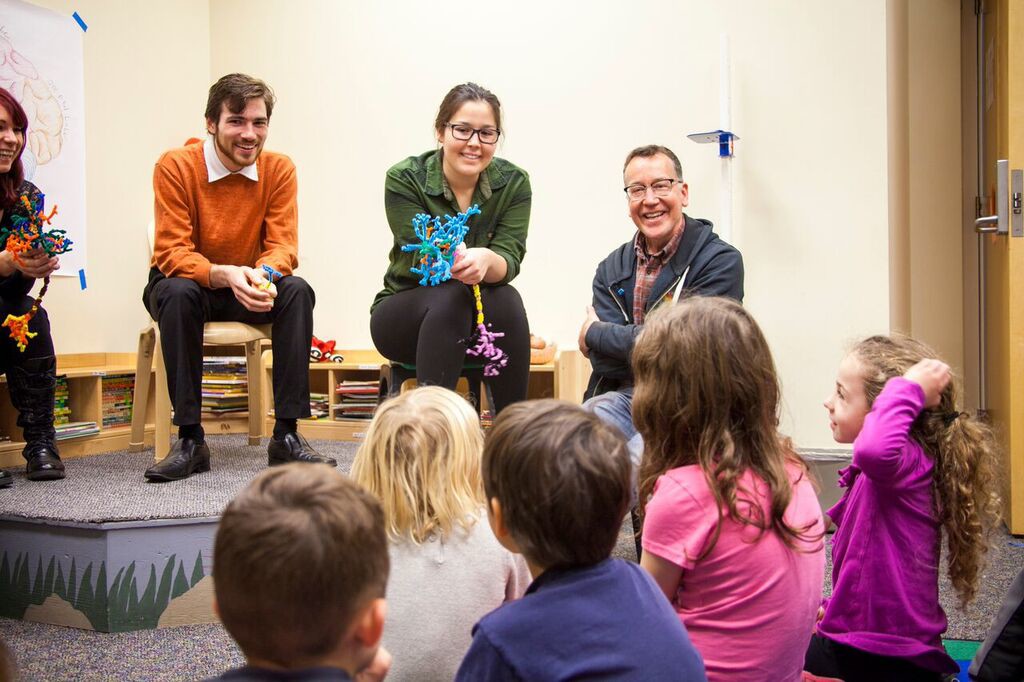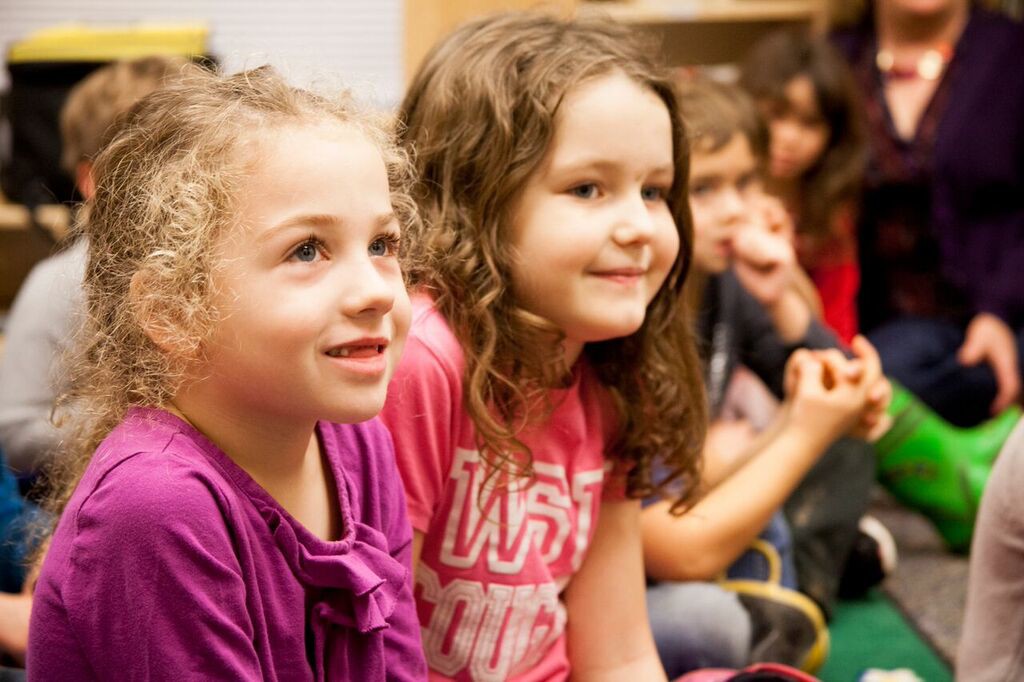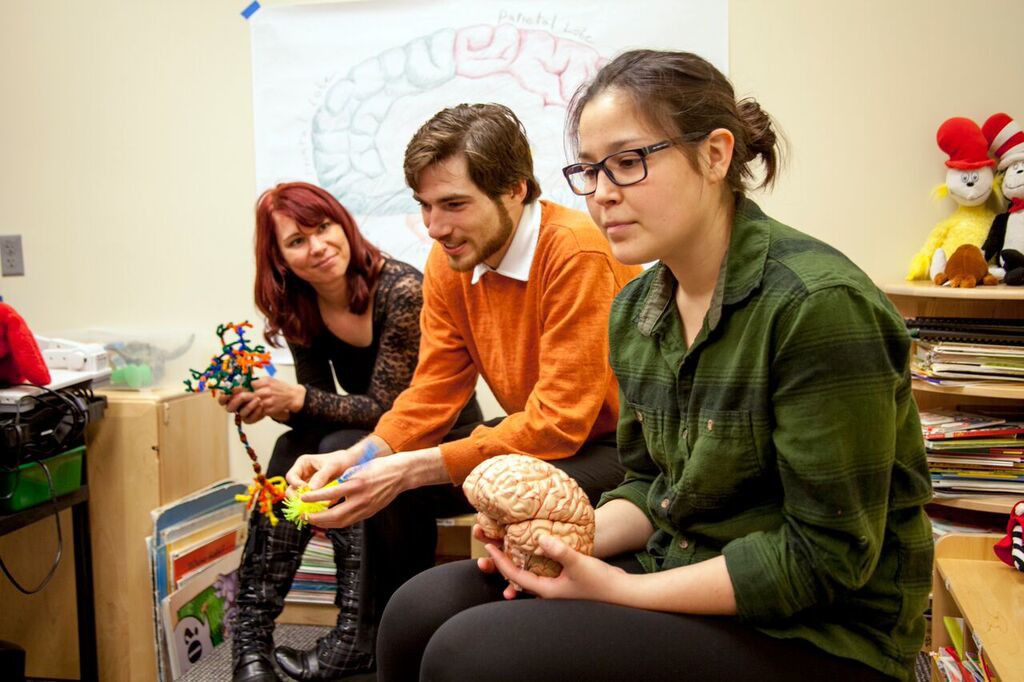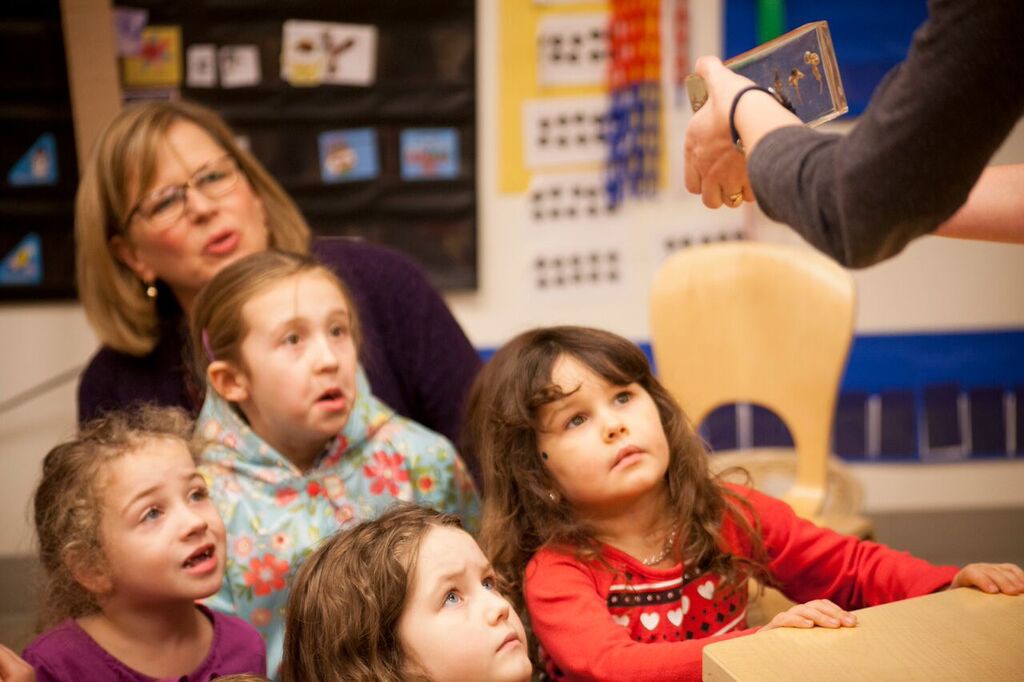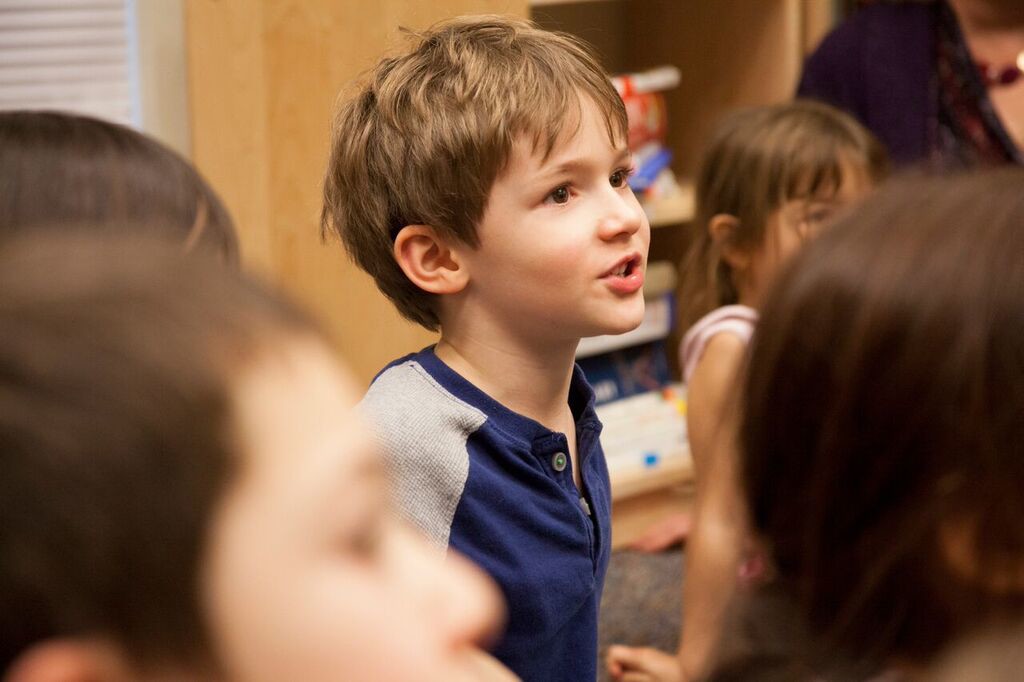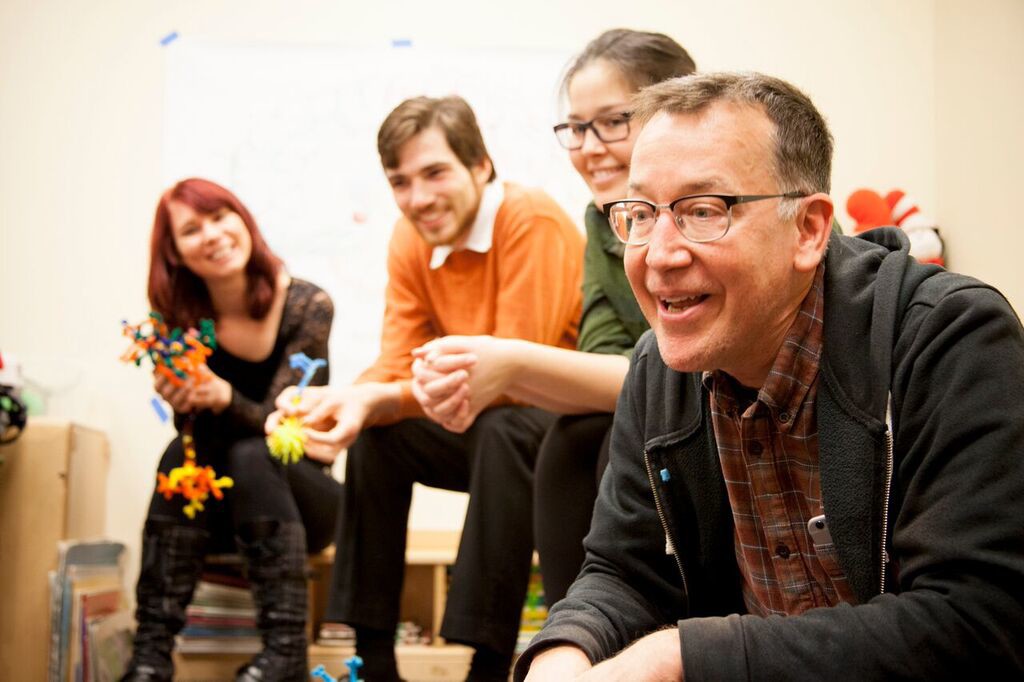An enthusiastic band of Noggin volunteers met an exuberant and well-informed classroom of 4 and 5 years olds this morning, who had been eagerly learning, and singing, about their changing brains!
Kindergarten teacher Kelsey Day welcomed us into her friendly classroom at WSU Vancouver, where students already knew all about their “security guard” (a.k.a., their amygdala), their “memory saver” (the hippocampus), and their “wise leader” (those developing frontal lobes)…
As a diverse group of volunteers from several area campuses, we first introduced ourselves to the kids: Kimberly Engeln, Angela Gonzalez, Michael White and John Harkness from WSU Vancouver, and Austin Howard, Devin Christianson and Erin McConnell from PSU…
We then talked about neurons, those remarkable, wire-like cells that make up our nervous system, and asked the kids what kinds of information they though neurons might carry about the world around them.
(Pic below by Laura Rider Dutelle)
One girl described the time her dad (accidentally!) spilled hot coffee, and how she quickly pulled her arm away in response. Information about that injury was carried – by electricity! – along neurons in her arm to her spinal cord, where they met with other neurons, which sent their own electric currents back to move her muscles and pull her arm away, and out of danger. Neurons linked together in networks can do great things!
(Pic below by Laura Rider Dutelle)
Our conversations also covered those impulsive emotions, including sudden bursts of anger, and excited motivation, and how it’s hard to figure out what the expectations are for your behavior in different settings, like the classroom, for example, versus recess…
(Pic below by Laura Rider Dutelle)
Using a colorful brain, drawn by Jeff Leake, Noggin participants Austin, Kimberly, Angela and Michael described the role of “subcortical” structures like the amygdala (again, the “security guard,” attuned to potential threats) and another nucleus called the accumbens (which is sensitive to potential rewards), and how both can provoke that sort of impulsive emotional behavior…
(Pic below by Laura Rider Dutelle)
We also discussed the incredible importance of our developing cortex, including the emerging “wise leader” in our frontal lobes, in making more complex decisions about how to behave, and respond more effectively, in complex and varied situations…
And of course you need real experience in the world to learn our sometimes curious social rules. And when you remember specific episodes from your life (like that accidental coffee spill!), you are also depending on what kids learned as their “memory saver,” or hippocampus!
(Pics below by Laura Rider Dutelle)
Some pretty smart students in this classroom! We then transitioned to a room without carpet for a chance to examine real frontal lobes – a popular educational experience for all involved!
PSU graduate student Eric McConnell introduced the brains of fish, frogs, snakes, birds and rabbits, pointing out some of the structural components shared by all these organisms…
She also helped lead us all in singing about the brain!
We ended our visit with lots of great questions about the importance of sleep, and protecting your brain from injury, why memories from early infancy don’t linger, and the need to move and exercise and train yourself to balance and control your growing body…
Many thanks to Kelsey Day for welcoming us to class!
And please check out more amazing pictures by photographer Laura Rider Dutelle from the Marketing and Communications Department at WSU Vancouver…







